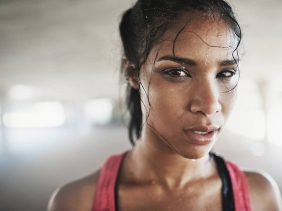Hatha Yoga: The yoga style for strength and relaxation
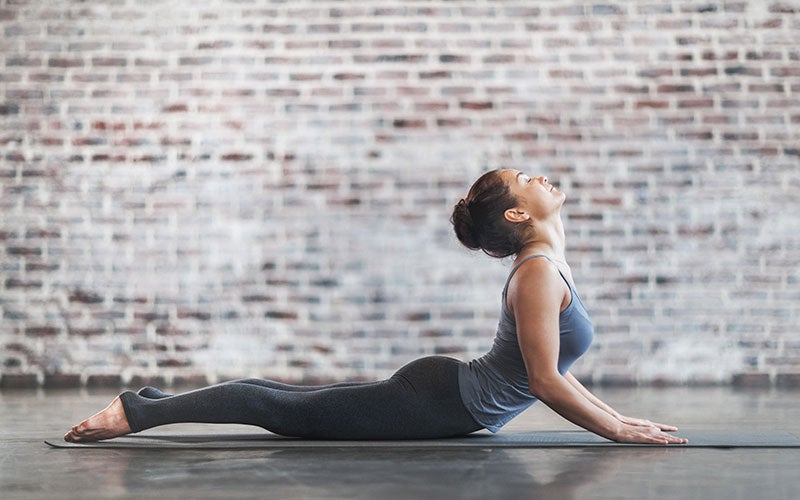 ©da-kuk
©da-kuk
Hatha yoga is one of the most popular yoga styles in the world. Using both physical movements and breathing techniques, it helps you to strengthen your muscles, increase your flexibility, and relax your mind. Here’s everything you need to know about hatha yoga.
What is Hatha Yoga?
Hatha is a style of yoga that has been practiced for thousands of years and continues to be the most widely practiced form of yoga in the world today. It combines physical exercises, called asanas, with breathing exercises, called pranayama.
The word “Hatha” means “force,” and comes from Sanskrit, an ancient Indian scholarly language. The practice focuses on strengthening exercises, and in a classic hatha class, you slowly flow between individual postures and align your breath to your controlled movements. A phase of tension is always followed by a sequence of relaxation. Hatha yoga is meant to give you stability and help you feel centered and balanced, both physically and mentally.
Tip: It’s important to drink enough after a strenuous hatha flow. Give your body the electrolytes it’s been using, while stocking up on protein for your muscles too. It’s easy and delicious with our CocoWhey.discover our CocoWhey now
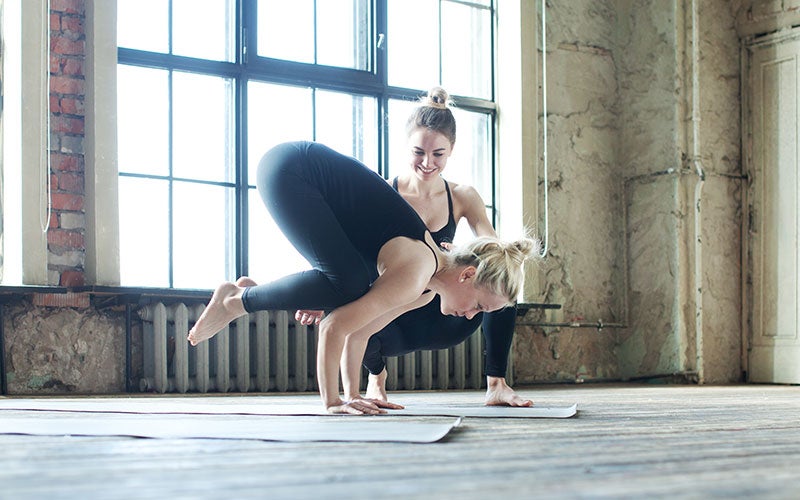
How does hatha yoga work?
In a hatha yoga class, which usually lasts between 75 and 90 minutes, there’s a clear focus on the physical practice. But although you might work up a sweat, there is plenty of mental work and relaxation to do, too.
In addition to the asanas, you can expect a meditation at the beginning of the session, breathing exercises, and a final deep relaxation (savasana).
Although the movements can vary from class to class, you’ll usually begin by warming up and stretching the body. This is often followed by a sun salutation, a typical yoga sequence, and then by various strengthening asanas for different parts of the body. Hatha class is less about speed and more about stability and strength.
Typical exercises and exercise sequences in Hatha Yoga are:
- Cat-Cow (Marjaryasana-Bidalasana)
- Sun Salutation (Surya Namaskara)
- Warrior (Virabhadrasana)
- Headstand (Sirsasana)
- Shoulder stand (Sarvangasana)
- Bridge (Dhanurasana)
- Forward fold (Paschimothanasana)
- Plow (Halasana)
- Triangle (Trikonasana)
- Fish (Matsyasana)
- Cobra (Bhujangasana)
- Locust (Shalabhasana)
- Seated Twist (Ardha Matsyendrasana)
- Crow (Kakasana)
- Corpse (Savasana)
If you start taking yoga classes, you’ll be introduced to these postures and flows step by step. No one needs to master a headstand or shoulder stand right off the bat!
Tip: Here are 9 yoga exercises to help you relax in your day-to-day life!
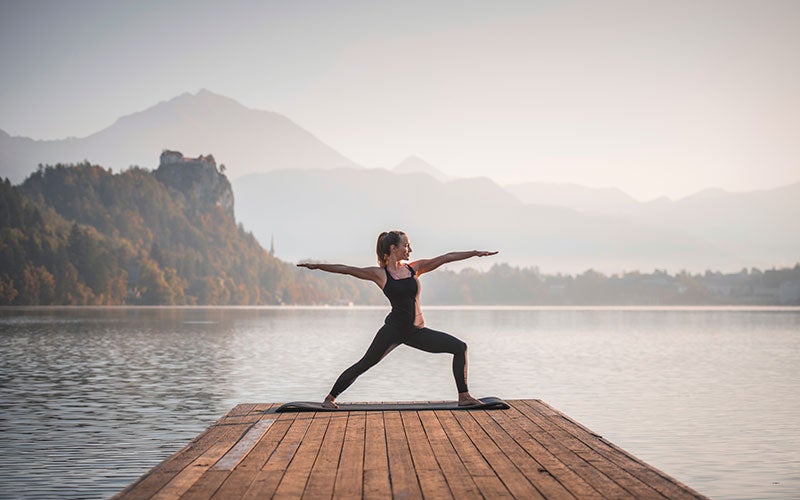
Hatha Yoga in everyday life
Hatha doesn’t stop off the yoga mat: toga teachings suggest a holistic practice to those who practice it, including nutrition and mindset. Hatha yoga is built around five pillars:
- Proper movement: You explore and strengthen your body with physical exercises called asanas. These are not only meant to train your muscles, but also to strengthen your discipline and well-being.
- Proper nutrition: a varied diet should nourish the body and strengthen it from the inside out. You should also eat your food consciously and slowly.
- The right breathing: Pranayama stands for various techniques that train controlled breathing. To breathe correctly means to observe and consciously use your breath to recharge your energy, strength. and composure.
- Proper relaxation: deep relaxation is the complement to strenuous physical practice. Regular periods of relaxation in everyday life should help reduce stress and invigorate your body.
- The right intention: Hatha yoga incorporates regular meditation to develop a positive mindset. Compassion, authenticity, and mindfulness are all cornerstones of yoga teachings.
Integrating Hatha Yoga holistically into one’s life based on these five pillars is said to bring about a fulfilling and balanced life.
What is the aim of hatha yoga?
The primary focus of this practice is to control the force of the body by uniting the physical asanas with conscious breath.
- This is said to have a number of positive effects:
- Through regular hatha yoga practice, you can build your body’s strength, flexibility, and balance.
- Holding the asanas strengthens your core muscles in particular, which can reap benefits in other forms of exercise as well.
- Through certain poses you can alleviate or prevent back and neck pain.
- The combination of physical fitness, breathing and relaxation exercises, and meditation can help reduce stress.
- The calm, structured practice is ideal for beginners: You can learn important basics that you will encounter again in other types of yoga, step by step.
Convinced? Then awaken the yogi or yogini in you: Try our short yoga flow to join in!
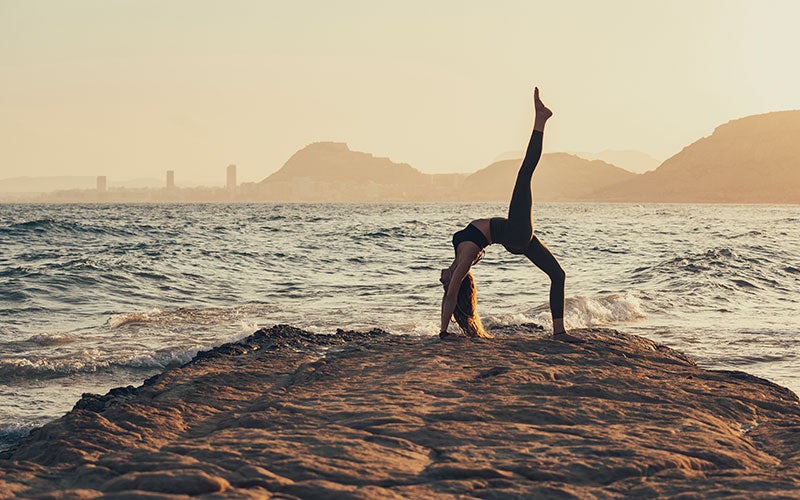
Who is Hatha Yoga suitable for?
Hatha yoga is ideal for beginners, as it’s somewhat calm and structured. The classes generally follow a fixed sequence and include key yoga elements, as well as meditation. Students are introduced to the practice from the ground up, and can build their skills bit by bit. Advanced yogis will also get their money’s worth if they’re looking to balance their daily routine and strengthen as well as relax their body and mind.
Those who’d prefer a more fitness-oriented yoga style will feel less comfortable with Hatha Yoga.
Our tip: Thinking about yoga for beginners? Here’s all the info you need before your first yoga class.
Alternatives to Hatha Yoga
Want to give your cardiovascular system a good kick on the mat? Or are you looking for a meditative yoga style that will leave you more limber? Here are a few styles of yoga you might enjoy as an alternative to hatha:
- Bikram: This style of yoga, also known as hot yoga, is a modern variation of hatha yoga and is practiced at around 40 degrees Fahrenheit. The high humidity and temperature increase your flexibility during the session and make the sweat flow on its own.
- Ashtanga: Ashtanga Yoga consists of six fixed series of exercises that vary in difficulty and intensity. They’re performed in rapid sequence without a break. This style of yoga is more suitable for advanced yogis who are looking for a balance to the slower hatha.
- Vinyasa: Vinyasa yoga is similar to Ashtanga in that it involves a dynamic series of exercises, but they aren’t fixed. This style of yoga is very freeform and the most fitness-oriented.
- Yin: This style of yoga is very meditative. Postures are held for longer periods — even up to ten minutes. It mainly improves your flexibility, but also pushes you to your mental limits.

Summary
- Hatha yoga focuses on invigorating physical exercises coupled with conscious breathing.
- A Hatha Yoga class usually consists of meditation, breathwork, asanas, and a final relaxation.
- Yoga poses are held forcefully in Hatha Yoga.
- The style is slow and controlled.
- In addition to practicing on the mat, Hatha advocates a mindful lifestyle that includes a balanced diet, a positive mindset, and harmony between tension and relaxation.
- Hatha yoga is especially suitable for beginners and yogis who are looking for a peaceful balance to the stress of everyday life.
Sources for this article
We at foodspring use only high-quality sources, including peer-reviewed studies, to support the facts within our articles. Read our editorial policy to learn more about how we fact-check and keep our content accurate, reliable, and trustworthy.





















